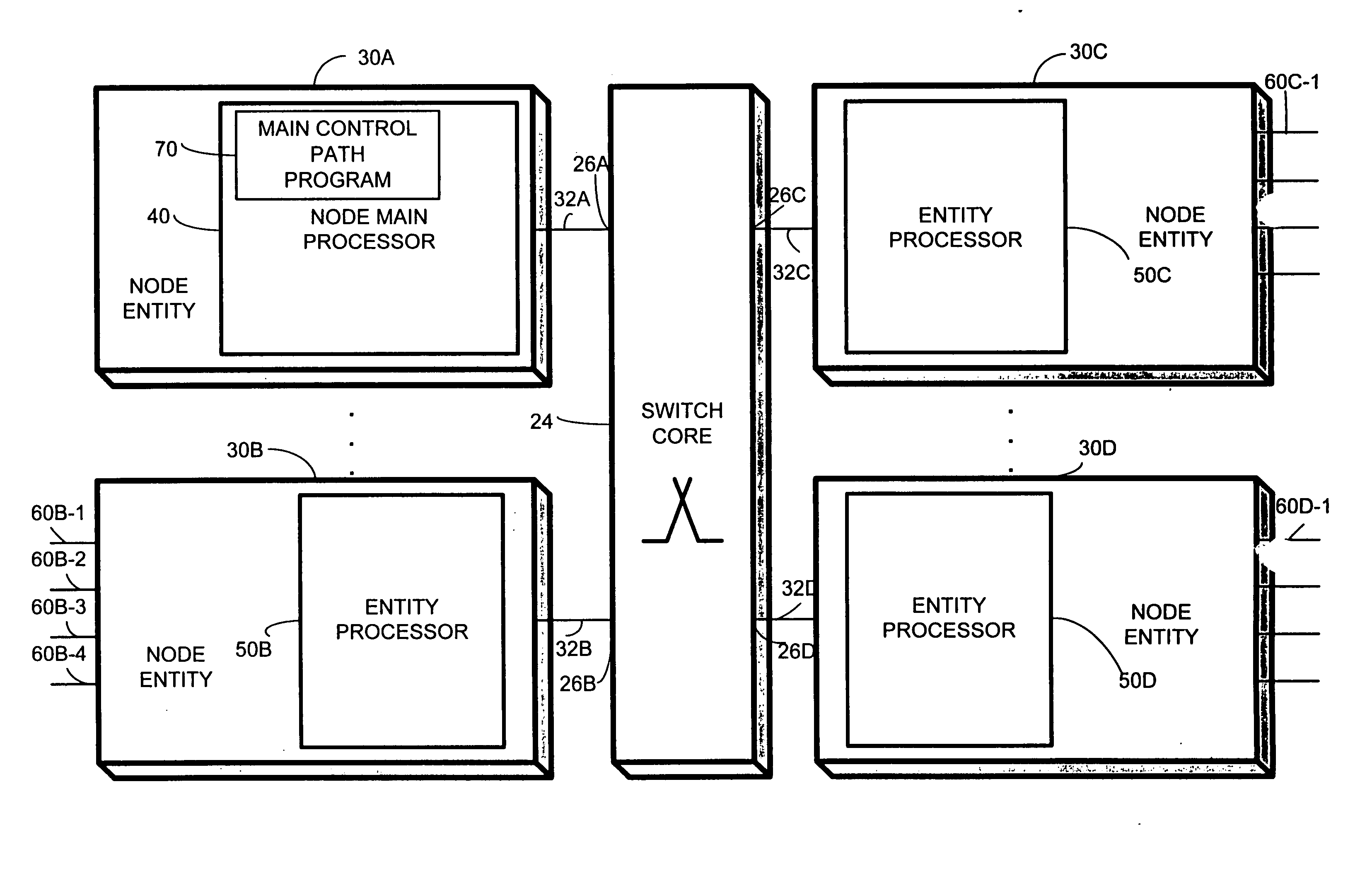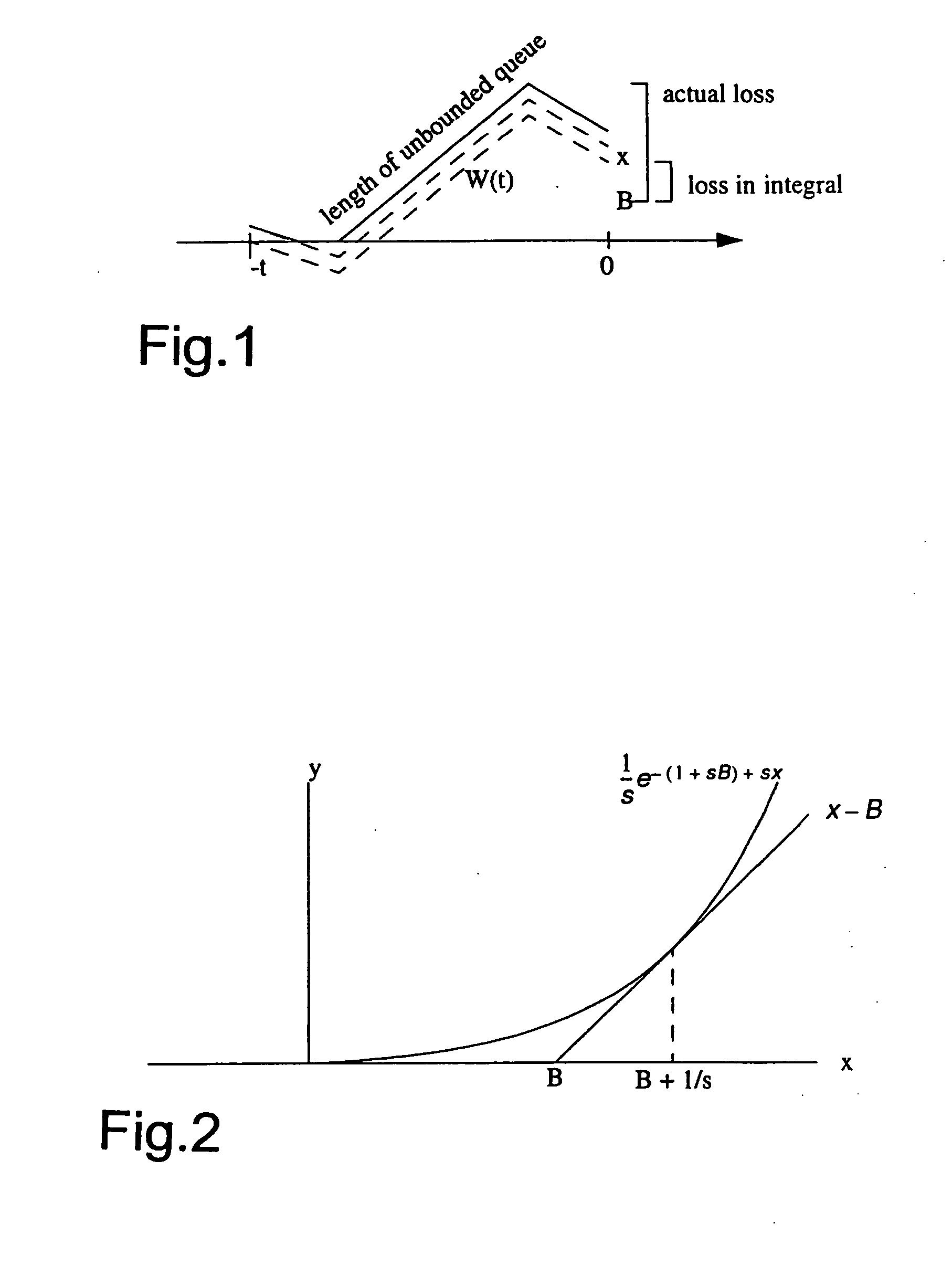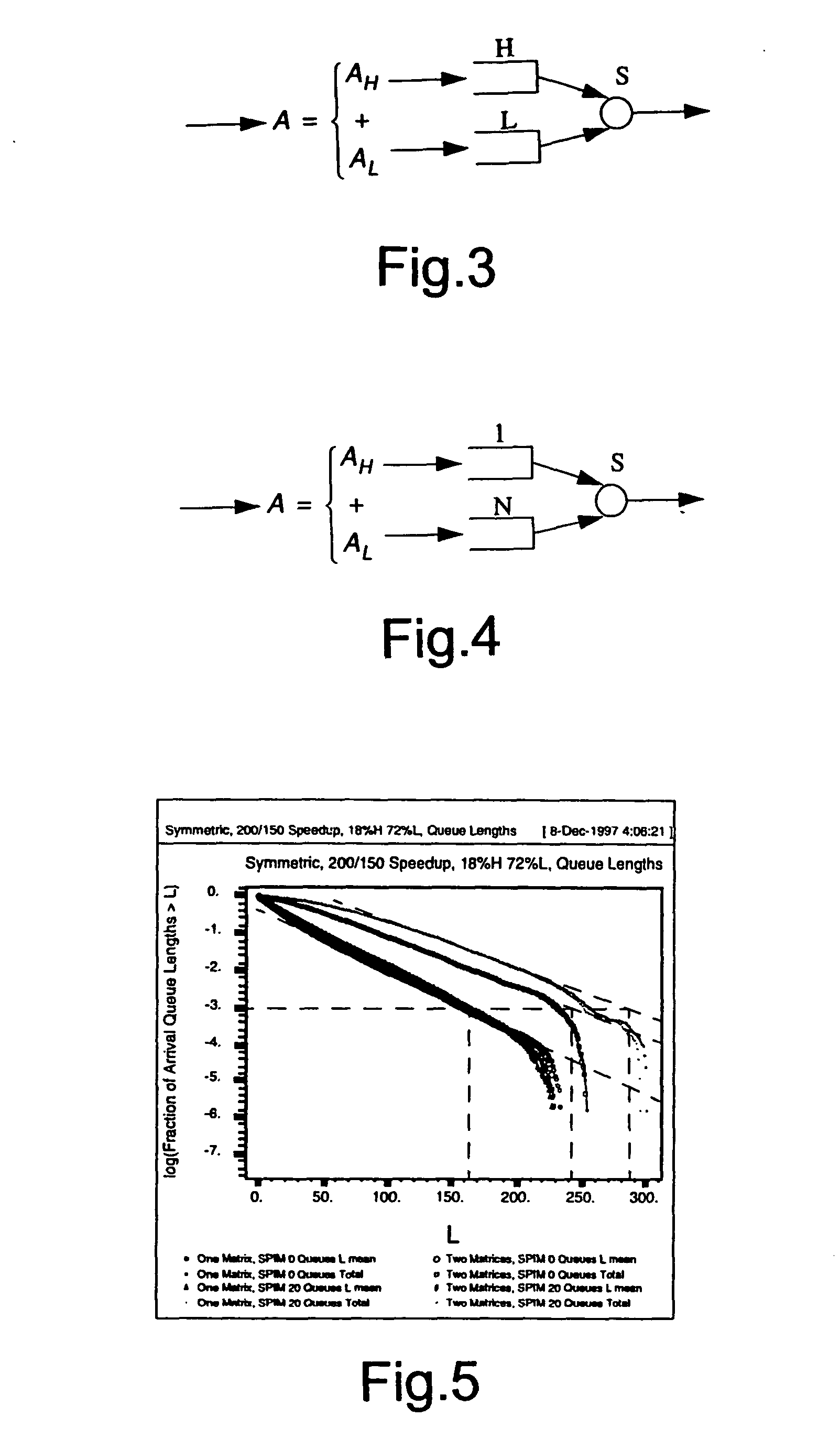Connection admission control based on bandwidth and buffer usage
a bandwidth and buffer usage technology, applied in the field of telecommunications, can solve the problems of leaking bucket, burst information of leaky bucket, and ineffective bandwidth methods,
- Summary
- Abstract
- Description
- Claims
- Application Information
AI Technical Summary
Problems solved by technology
Method used
Image
Examples
example 1
5.1 Example 1
Constant Arrival Rates
[0234] The workload in an interval of length t is
A(t)=Rt
[0235] where R is the arrival rate. The log moment generating function (illustrated in FIG. 8A, for constant rate source with R=1) and its derivative with respect to s (illustrated in FIG. 8B) and its derivative with respect to t (illustrated in FIG. 8C) are 42 A( s ; t ) = log - .infin. .infin. sx ( x - Rt ) x = sRt s A( s ; t )= Rt t A( s ; t )= sR 2 s 2 A( s ; t )= 0 2 s t A( s ; t )= R 2 t 2 A( s ; t )= 0
[0236] In this case, the asymptotic approximation is exact:
.mu..sub.A(s;t)=h.sub.A(s)t
where h.sub.A(s)=s.sub.R
[0237] The approximation with constant service rate C become 43 log P lossq whereq = - log ( Rst ) and B = 0 and C = R - 1 st for s , t > 0 and 1 stR q max
[0238] This is the case where the bound applies with equality, since f.sub.W(x;t) consists of a single delta-impulse at x=(R-C)t=B+1 / s, where the exponential curve touches the line y=x-B. In this case, the approximation is exact....
example 2
5.2 Example 2
ON-OFF Periodic Fluid Source
[0239] The source is ON for T.sub.on and OFF for T.sub.off. The period is T.sub.on+T.sub.off=T. In the ON state, the source generates data at the peak rate 44 R T T on,
[0240] and in the OFF state, it generates no data. This is an extreme behavior acceptable by a leaky bucket regulator with mean rate limit R, and bucket size RT.sub.off. The phase of this periodic pattern is uniformly distributed in [0,T).
[0241] FIG. 9 is a graph showing ON-OFF periodic arrivals. In FIG. 9, A(.tau.,t+.tau.) is the amount arriving in [.tau.,t+.tau.). The phase .tau. is uniformly distributed in [0, T.sub.on+T.sub.off). From FIG. 9, it can be seen that the density function of A is the sum of two delta-impulses and a uniform distribution between them. 45 f A( x ; t ) = { ( x - nRT ) for t = nT a ( x - x 1 ) + bU ( x ; x 1 , x 2 ) + c ( x - x 2 ) otherwise where U ( x ; x 1 , x 2 ) = { 1 x 2 - x 1 for x 1 < x < x 2 0 elsewhere
[0242] For t equal to an integer number ...
example 3
5.3 Example 3
Discrete Periodic Arrivals
[0249] An amount of RT arrives at times t=nT+.alpha.T, where n is integer and .alpha..epsilon. [0,1) is constant. The phase .alpha.T is uniformly distributed in [0,T).
[0250] In an interval of length t=nT+.alpha.T arrives an amount A(t) of either (n+1)RT or nRT,
P(A(nT+.alpha.T)=nRT)=1-.alpha.
P(A(nT+.alpha.T)=(n+1)RT)=.alpha.
[0251] The log moment generating function, its derivatives, and the asymptotic log moment generating functions are 84 A( s ; nT + T) =sR ( n + 1 )T + log (( 1 - ) - sRT+ s A( s ; nT + T)= R ( n + 1 )T -RT ( 1 - ) - sRT ( 1 - ) - sRT+ t A( s ; nT + T) = 1 T 1 -- sRT ( 1 - ) - sRT+ 2 s 2 A( s ; nT + T)= R 2 T 2( 1 - ) - sRT (( 1 - ) - sRT+ ) 2 2 t s A( s ; nT + T)= R - sRT (( 1 - ) - sRT+ ) 2 2 t 2 A( s ; nT + T)= -( 1 --sRT) 2 T 2(( 1 - ) - sRT+ ) 2 h A( s ) = sR
[0252] Notice that the asymptotic log moment generating function is the same as for a constant rate process. Using this, the asymptotic log moment generating function ...
PUM
 Login to View More
Login to View More Abstract
Description
Claims
Application Information
 Login to View More
Login to View More - R&D
- Intellectual Property
- Life Sciences
- Materials
- Tech Scout
- Unparalleled Data Quality
- Higher Quality Content
- 60% Fewer Hallucinations
Browse by: Latest US Patents, China's latest patents, Technical Efficacy Thesaurus, Application Domain, Technology Topic, Popular Technical Reports.
© 2025 PatSnap. All rights reserved.Legal|Privacy policy|Modern Slavery Act Transparency Statement|Sitemap|About US| Contact US: help@patsnap.com



